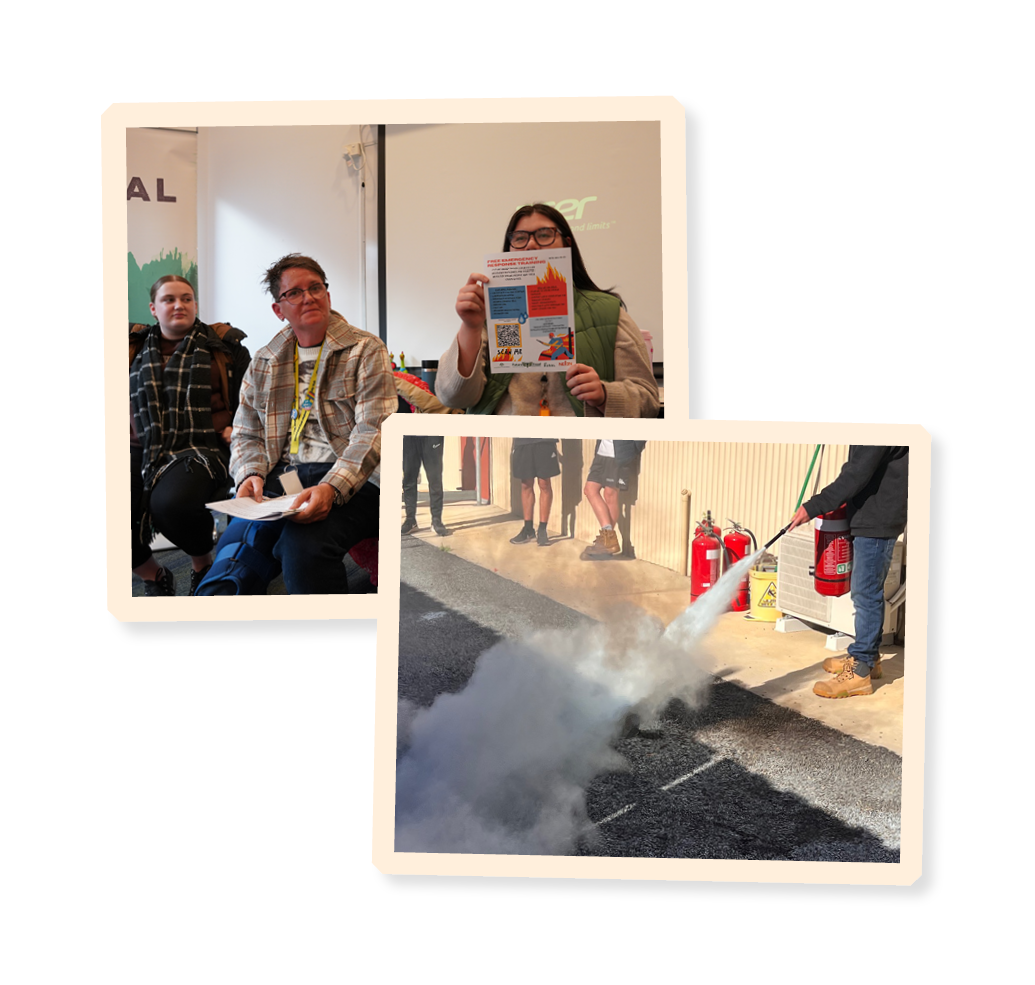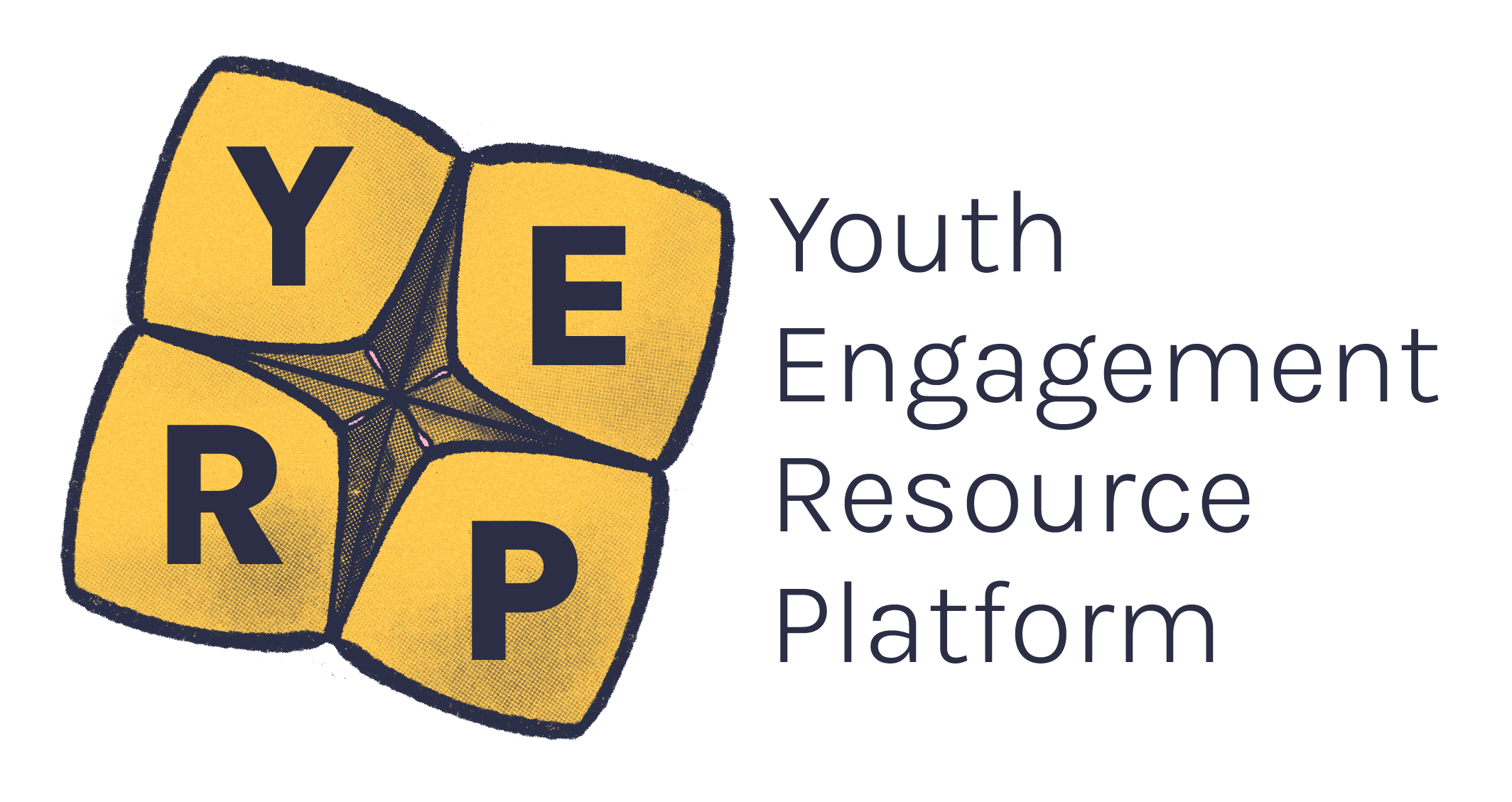Climate change is one of the most pressing issues that humanity faces and climate disasters are the results of these changes to our environment. They’re becoming more frequent and more severe.
But luckily, we have young people leading disaster preparation and recovery. As experts in your own lives, you have important and equal contributions to make in disaster recovery and rebuilding efforts.
Your unique lived experience, ways of thinking and broader skills enable you to contribute to your communities in meaningful ways.
This resource will help you learn more about how to take the lead when a disaster strikes, Future Proof your community, and look after yourself while you do.
‘Hi everyone, my name’s Sarah and I use she/her pronouns.
I currently live on Wadawurrung Country in the southwest of Victoria.
But I grew up on Yuin Country, which is on the far south coast of New South Wales.
It was there that I experienced Black Summer bushfires of 2019 to 2020.
As such, I'm here to talk to about youth participation in disaster preparation and recovery.
Young people bring unique skills and experiences to assist in the creation and the development of disaster preparation and recovery.
This is mainly due to natural disasters diversely affecting young people in ways that may be completely different to how they affect other members of the community.
Young people are the ones who are the experts on their own lives and the issues that affect them such as natural disasters.
As such, they deserve to be welcomed with a seat at the metaphorical table, that is disaster preparation and recovery.
As I mentioned, I lived through the Black Summer bushfires.
Through this though, I witnessed firsthand not only the effect that this disaster had on young people, but also the motivation and the passion that was brought forward as a result.
Young people began coming together in our small community and meeting in the name of positive change.
They were motivated by common goals ranging from wildlife preservation in bushfires to actively seeking out Members of Parliament to discuss policy change and climate related issues.
We are all equipped with the skills and potential to become leaders in disaster recovery and resilience, built for our lived and learned experiences.
As young people our voices and contributions deserve to be valued within our communities, and getting involved in disaster preparedness and recovery can really empower not only those around us, but also ourselves.’
The Hub has great information about preparing for disasters and how you can get involved in recovery and rebuilding efforts. It includes:
How to prepare for disasters: making an emergency plan and kit
Information for different disasters such as bushfires and floods
COVID-19 resources and recovery plans
YACVic also runs training for young people and communities specifically around youth participation and disaster resilience.
The best way to stay informed during an emergency is via emergency apps.
Vic Emergency is free and simple to use. You will receive live notifications that will inform you of what is happening around you.
ABC radio is available Victoria wide, and local stations are best place for live updates.
If you’re travelling across rural Victoria, the CFA have a free online training module on ways to be safe. We recommend, ‘Bushfire Planning: You and the person you care for’.
Community Recovery Committees (CRCs) are groups of people leading recovery efforts. They centre local voices, know-how and expertise during recovery, resilience and (re)building efforts, planning and delivery.
We really encourage you to get involved. Reach out to your local council to find out if they have a community recovery committee currently and if not, ask for one to be created.
If you’re in Eastern Victoria, find your local Community Recovery Committee now.
Youth Advisory Groups (YAG) or consultation/committee groups bring young people together to share their experiences, and co-design solutions to the challenges they face, in a safe and supportive environment.
Your local council in should have a Youth Council. If they don’t you could establish one and work with the council to get one off the ground.
Case study: Youth working group for bushfire recovery
The 2019-2020 bushfires saw farmland and bushland destroyed with the town of Corryong in the Upper Murray being evacuated.
Through Corryong Neighbourhood Centre, two young people, Quinn and Errol started a youth working group that was run by young people, for young people to have their say on the recovery process.
The group was upskilled to learn how to advocate for themselves and demonstrate their identity through t-shirts and beanies. They've also been involved in redeveloping the local skate park, the Playles Hill Park and engaging their peers in social activities.
This group was the first platform created for young people to give input on decisions being made about community recovery following the bushfires.
It’s a great example of young people taking matters into their own hands and amplifying their own voices.
We hope this inspires you to create your own working group!
Think about events you could help organise to bring some fun to your life during difficult times and bring the community together:
-
Community barbecue
-
Photo exhibition at the local gallery
-
Farmers markets
-
Fete’s, fairs and festivals
-
Community tree planting
-
Film screenings
-
Talent shows and charity concerts
Another option could be FReeZA, a fantastic Victorian Government program run by The Push that gives young people aged 12–25 the chance to organise, lead and perform live music, dance parties and other events.
You could volunteer for emergency services in your local community, and many volunteer programs exist within the Country Fire Authority (CFA), State Emergency Service (SES), and St John Ambulance Victoria.
You will receive accredited, recognised training as part of your role, ranging from1,2,3:
-
First aid
-
General rescue
-
Chainsaw operations
-
Community education
-
Media training and much more.
-
You will gain leadership and teamwork skills, confidence and a greater knowledge and understanding of disasters.
Having opportunities to undertake meaningful work experience will help you upskill, network and build your confidence.
You can gain experience in:
-
Solving real-life problems and seeing the impact of your work
-
Researching market conditions and learning how they affect businesses
-
Communicating with different people with different skill sets
-
Learning about new technologies and how they’re used in the workplace
-
Working in different roles to see what they entail on a day-to-day basis.
If your community has experienced a disaster, think about all the spaces that need to be rebuilt.
You could be part of that and have a say in the design, rebuilding and planning of:
-
Footpath redevelopment
-
Libraries
-
Local parks and community facilities
-
Pools, skateparks, basketball courts and sporting ovals
Apprenticeships and traineeships provide a gateway to great jobs and real hands-on training.
You can earn an income while gaining valuable work and life experience, as well as achieving a qualification in a desired field of expertise.
Disaster recovery and response pathways include:
-
Certificate II in Firefighting
-
Certificate II, III or Diploma in Public Safety
-
Certificate IV in Mental Health
-
Certificate III, IV or Diploma in Community Services
-
Certificate IV or Diploma of Youth work
-
First Aid
-
Communications training
-
Auslan interpreting
We encourage you to research these areas and the different organisations, universities and/or TAFE’s that offer these pathways and qualifications.
If your feeling inspired, read YACVic’s ‘Speaking Up: Young People’s experiences of Bushfire and Recovery'.
It’s got two case studies of how young people stepped up in their communities and remained connected in recovery and resilience efforts.
“Young people aren’t just important for our community’s future, they’re important for our present”
–Errol and Quinn Obran
Remember, you have valuable contributions to make so get out there and get involved!
-
State Emergency Service. (2024). Junior accredited units and child safety. https://www.ses.vic.gov.au/join-us/volunteer-roles/junior-accredited-units
-
Country Fire Authority. (2023). Junior volunteers. https://www.cfa.vic.gov.au/volunteers-careers/volunteer-with-cfa/junior-volunteers
-
St John. (2024). St John youth service through adventure. https://www.stjohnvic.com.au/community-programs/st-john-youth/





